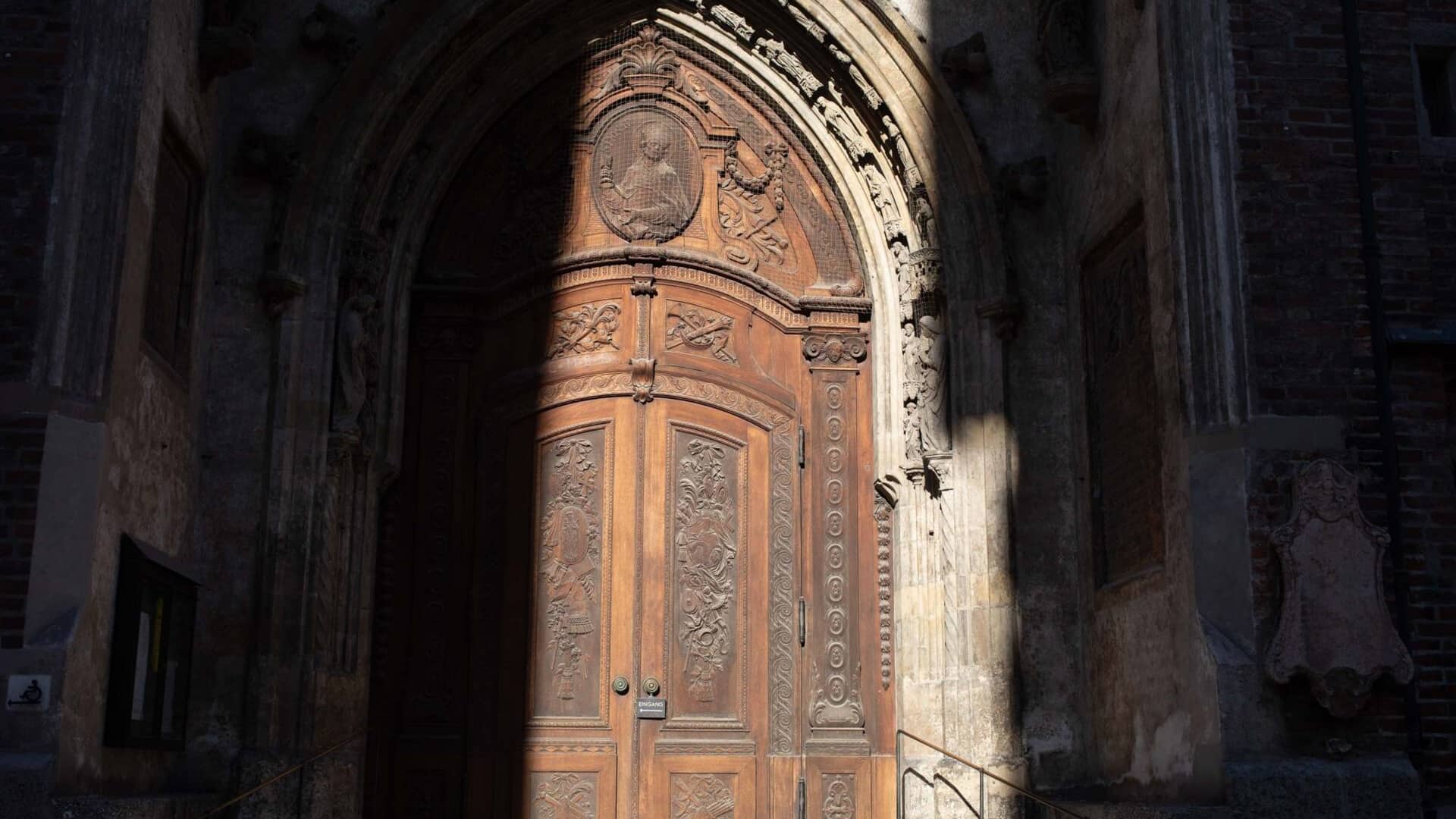First recorded in the 9th century, Aurora lucis rutilat (“Dawn reddens with light”) depicts the dawn of Easter morning and the triumph of resurrection.
Late Renaissance composer Orlande de Lassus (c. 1532–1594) created a ten-voice motet setting near the end of his life (c. 1592). Born in the Netherlands, Lassus was long employed by the court of Munich.
As Lassus’ motet unfolds, we are enveloped in majestic and celebratory polyphonic lines. Two five-voice choirs enter into a celestial dialogue in which the gleaming light of the high register meets the darkness of the lower voices.
This performance features The Sixteen:
The combined voices of the Choirs of Maîtrise Nationale de Versailles and New College Oxford offer this celebratory performance:
Recordings
- Lassus: Aurora lucis rutilat, The Sixteen Amazon
- Lassus: Aurora lucis rutilat, Edward Higginbottom, Choir of Maîtrise Nationale de Versailles, Choir of New College Oxford Amazon
Featured Image: architecture of Munich, where Orlande de Lassus lived, photograph by Frank Stolle

